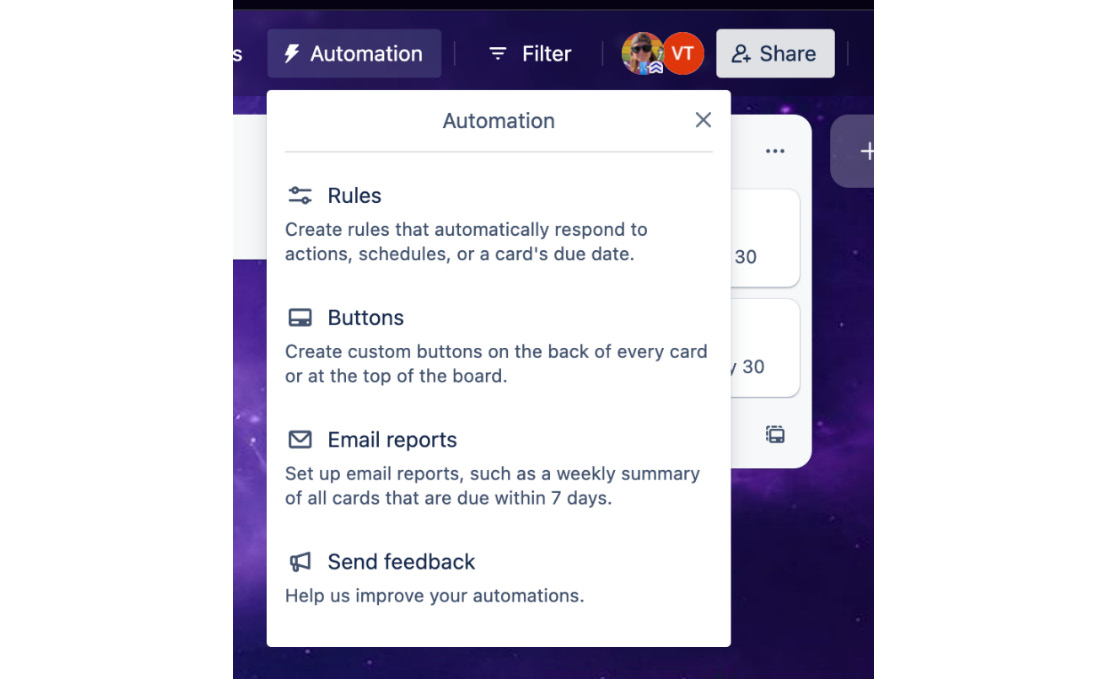Common Automation Actions
It’s now time to talk about what happens after you create triggers. Since you know your options for starting an automation workflow, let’s talk about the types of actions you can actually automate! We’ll start by covering the most used and basic ones.
In this chapter, you’ll learn how to automate activities such as the following:
- Moving cards to other boards or lists
- Adding members or labels
- Adjusting due dates
- Creating checklists or comments
That’s just a few... let’s dive in so you can see what I mean. We’ll start with where to find these actions.









